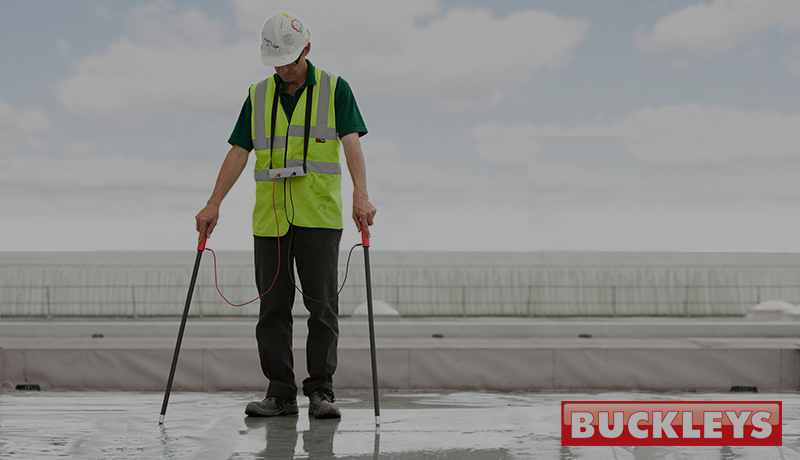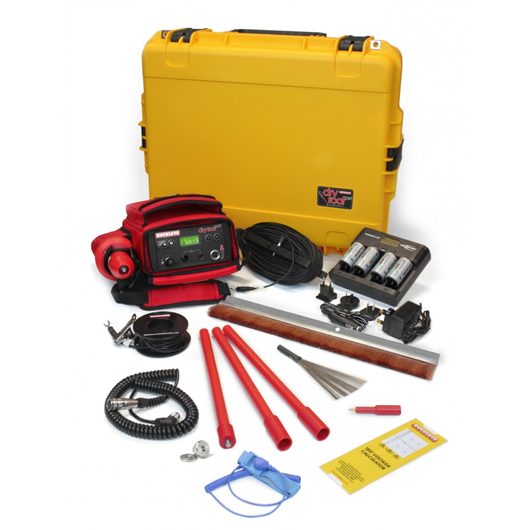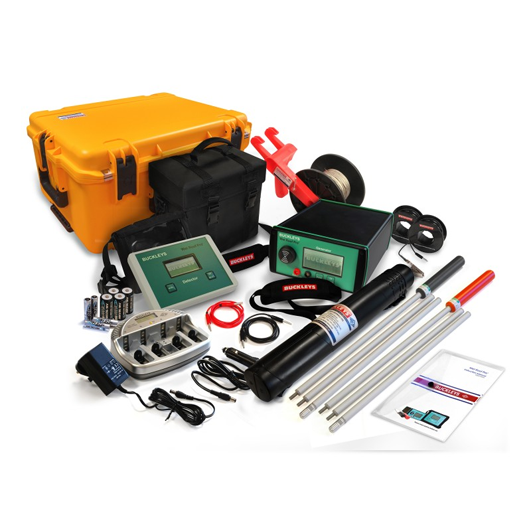What is Electronic Leak Detection?
Electronic leak detection falls in to one of two categories: wet or dry testing.
Wet testing uses a conductive perimeter wire on the surface of the test area; covered with water and connected to a Pulse Generator which produces low-voltage current that propagates over the test area via the water. An earth-return lead connects the Pulse Generator to a known earth point on the building’s structure. Pulse of current find a path to earth through leaks and holes in the non-conductive roofing membrane. The Detector Unit measures this current flow and directs the operator towards the exact location of any leaks.
The roof’s entire surface must be adequately covered with water. Membrane thickness has no impact on the wet testing process.
Dry testing applies a high-voltage DC current to the surface via an electrode (such as a phosphor-bronze brush) connected to the detector unit. An earth return lead from the detector unit is connected to a known earth on the building’s structure. As the operator passes the electrode brush over the roof’s non-conductive surface, any holes allow the completion of an electrical circuit - triggering the detector unit’s alarm - highlighting a fault's location.
Dry testing is a far quicker process than wet testing although accurate membrane thickness measurement and detector set-up is fundamental. An incorrectly set detector unit can damage the roof’s surface or leave defects undetected.
Most non-conductive roofing membranes have a small amount of low-level electrical conductivity. Buckleys PD30R and PD40R test kits accommodate this ambient conductivity by allowing the user to set a sensitivity threshold below which the detector’s alarm system will not be triggered.
To successfully undertake a dry roof leak detection test, the roof’s entire surface must be completely dry and free from moisture, although moisture beneath the membrane (from leaks) may actually help the dry testing process.




